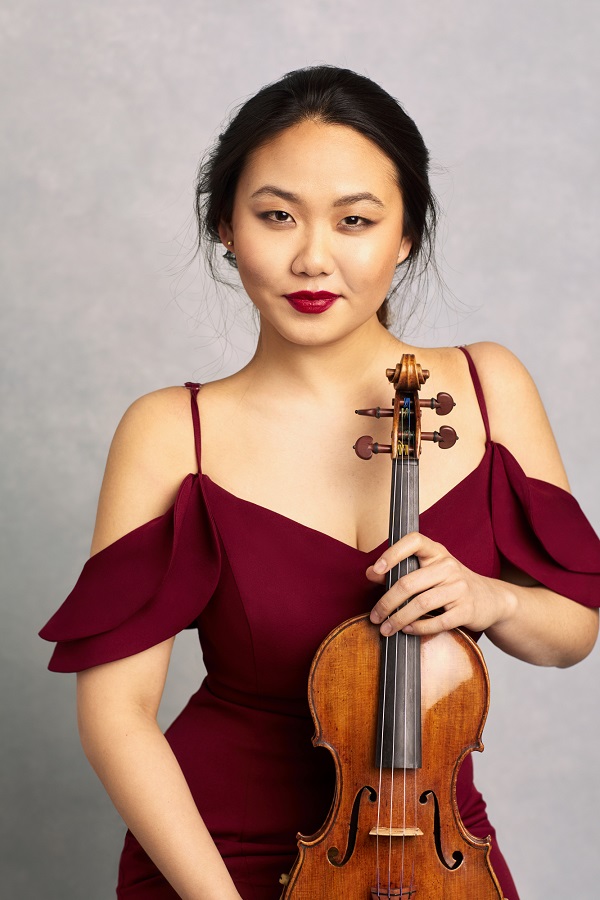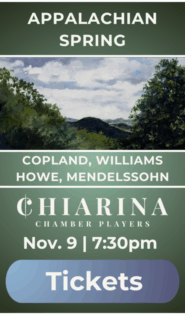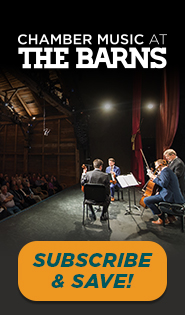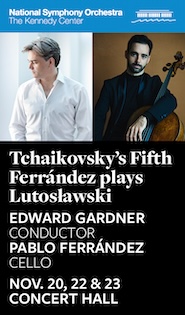Wolf Trap opens chamber music season with piano quintets and violin morsels

Violinist Stella Chen played with Chamber Music Society of Lincoln Center at Wolf Trap Friday night (Photo: Fay Fox)
Wolf Trap inaugurated the new season of its series Chamber Music at The Barns with a pairing of piano quintets. Five musicians from Chamber Music Society of Lincoln Center took the stage Friday night for a program centered on the chamber music of Antonín Dvořák. The concert celebrated Founder’s Day, in honor of Catherine Filene Shouse, who donated the farm that became Wolf Trap National Park for the Performing Arts in 1971.
The two violinists on the program each introduced the rather different piano quintets with a work for violin and piano. Stella Chen got the larger piece of the pie with Dvořák’s Violin Sonatina, the last work of chamber music he composed while living in the United States, written for his two children, ages 15 and 10, to play together. (The evening’s other violinist, Arnaud Sussmann, played the same piece at Wolf Trap last season.)
Chen’s clean tone gave an innocent sheen to the first movement’s main theme, enlivened by Dvořák with syncopated rhythms in imitation of American folk song. Pianist Anne-Marie McDermott provided just the right amount of support, a soft envelope of sound made flexible with careful rhythmic pacing. Both musicians brought elegant simplicity to the melancholy second movement, the so-called “Indian Lament,” related to the composer’s unrealized plans to make Longfellow’s epic poem The Song of Hiawatha into an opera.
Sweet liveliness propelled the Scherzo movement, with an inward turn in the more subdued Trio, again pulsating with folksy rhythms. The duo finally embraced a sense of abandon in the Finale, with Chen channeling the enthusiasm of a folk fiddler. Tender moments of reflection dotted this active conclusion, again with McDermott shadowing Chen adroitly at every turn.
Samuel Coleridge-Taylor wrote his Piano Quintet in G Minor in 1893, the same year as Dvořák’s Violin Sonatina. Written when the British composer was only 18 years old, it shows considerable promise while remaining decidedly in the realm of juvenilia. Coleridge-Taylor, whose father was descended from enslaved African-Americans freed during the Revolutionary War, also visited the United States. In another tie-in, he eventually completed a large-scale adaptation of Hiawatha along the lines of what Dvořák had envisioned.
Chen took the first violin part in the piece, leading a string quartet sound that could be lush but was often in rather plain, unison textures. In the first movement, there were no major string solo moments, except for the first violin, the instrument Coleridge-Taylor had first studied at the Royal College of Music. Nicholas Canellakis coaxed plangent beauty from the cello solo that opened the second movement, similar in contour and rhythm to the cello tune that opens another piece composed in 1893, Dvořák’s Ninth Symphony (“From the New World”).
Chen’s vibrant sound dominated the Scherzo as well, with some interest in the pizzicato strings that accompanied McDermott’s melody in the Trio section. A folksy fugue in the strings offered the first chance to hear each of the musicians individually, a coy moment that elicited some giggles from the audience.
Violinist Arnaud Sussmann opened the second half with Eugène Ysaÿe’s Rêve d’enfant, a sugary single movement that felt a bit like an encore given before the applause. Ysaÿe made his first visit to America in 1894, the year that his son Antoine was born, to whom he dedicated this homesick lullaby. Sussmann’s tone was exquisitely sweet and quiet, the pitch tending to become sour only in louder passages because of an active vibrato.
The earliest work on the program, Dvořák’s Piano Quintet No. 2 from 1887, was also the strongest, one of the masterpieces of the chamber music repertoire. Sussmann took the first violin part this time, his pure E string sound shining at an angelically soft dynamic. McDermott’s sage presence at the piano, with rippling triplets in the contrasting second theme, anchored the ensemble.
Violist Paul Neubauer finally had his moment in the sun with rich and rueful turns on the lamenting slow theme of the second movement (“Dumka”), traded initially with McDermott’s keyboard and shared later with the cello. The third movement rollicked at a spirited tempo, an evocation of the Bohemian dance called the Furiant, a joyous romp contrasted by the music-box tinkle of the Trio section.
The ensemble gallivanted through the Finale and its initial joking themes, reminiscent of music-hall gaiety. A faux-solemn fugal passage preceded an angelic coda, with more seraphic playing from Sussmann on the first violin. The score adds up to about forty minutes of music, during which one never feels its length.
Pianist Anne-Marie McDermott returns with violinist Paul Huang, in music of Pärt, Prokofiev, Mozart, and Corigliano 7:30 p.m. November 11. wolftrap.org





